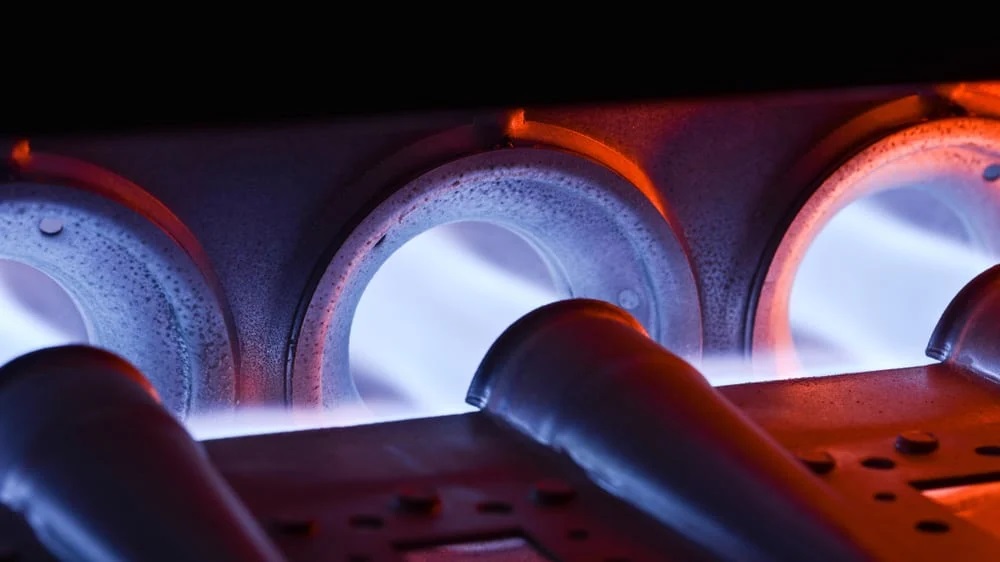
Why Your Furnace Flame Goes out When the Blower Turns on: A Guide for New Yorkers
Picture this: it’s a frosty night in Queens. The city lights shimmer outside, you kick on the furnace, and for a fleeting moment, the warmth hums to life. Then — poof! — the flame vanishes the moment the blower starts. Just like that, your cozy evening takes a cold turn.
If this sounds familiar, you’re not alone. Furnace flame-outs are one of the top winter headaches for homeowners across Queens and Manhattan, especially when the blower fan joins the mix. Let’s unpack why this happens, what it means, and how you can fix it (or better yet, prevent it from happening again).
What’s Actually Happening Inside Your Furnace?
Think of your furnace as a carefully choreographed performance. First, the ignitor sparks the flame, warming the air inside the heat exchanger. Once the system senses the heat is steady, the blower starts up, sending that warmth through the vents to warm every part of your place.
Now, if the flame goes out the moment the blower starts, that sequence gets completely thrown off. The cause might be something as harmless as a dirty sensor — or as serious as a safety switch detecting a dangerous condition. Either way, it’s your furnace’s way of saying, “Something’s off. Pay attention.”
Common Culprits behind a Furnace Flame Going Out When the Blower Turns On
1. The Flame Sensor — Tiny Part, Big Responsibility
This little rod has one job: make sure the gas valve only stays open if a flame is burning. But with time, it gathers a crusty layer of soot, oxidation, and dust that confuses the sensor. The furnace assumes there’s no flame, slams the gas valve shut, and — whoosh — your fire’s gone.
Quick DIY Tip:
You can gingerly remove the flame sensor and buff it with fine steel wool. Just go easy — it’s delicate. If cleaning doesn’t solve the issue, it might be time for a replacement.
Pro Insight:
In NYC, where furnaces often run overtime through long winters, sensors can degrade faster. Regular maintenance keeps them sharp and responsive.
2. Airflow Issues — When Your Furnace Can’t Breathe
If your furnace had lungs, a clogged air filter would be like trying to breathe through a wet towel. Airflow restrictions cause the system to overheat, tripping safety switches that shut off the burners. The blower then kicks in, and poof — your flame is gone.
What Causes Poor Airflow?
- Filters so packed with dust they could star in a lint commercial
- Blocked return vents (yes, that couch might be the culprit)
- Clogged exhaust flues or intake pipes
Fix It:
Swap filters every 1–3 months, more often if you live near heavy traffic or construction areas — which, let’s be honest, covers half of Manhattan.
3. Flame Rollout Switch — The Safety Hero You Don’t Want Triggered
A flame rollout happens when combustion gases and flames escape the furnace’s combustion chamber. It’s a dangerous situation — think heat where heat shouldn’t be — and it can lead to carbon monoxide (CO) leaks.
When this happens, your furnace’s flame rollout switch acts like a bouncer, immediately cutting power to the burners.
If You Suspect a Rollout:
- Turn off your furnace immediately.
- Don’t try to restart it.
- Call an HVAC professional.
2025 Update:
Modern systems now come with smart rollout sensors and even Wi-Fi-enabled safety alerts that ping your phone if heat levels go haywire. That’s a lifesaver for city dwellers that travel often or manage rental properties.
4. The Ignitors Losing Its Spark
Your hot surface ignitor is like the match that lights the show. But over years of use, it can weaken, crack, or simply wear out. When that happens, it may produce a weak flame that’s easily blown out once the blower fires up.
Tech Note:
Modern furnaces now use silicon nitride ignitors, which are tougher, longer-lasting, and far less finicky than older silicon carbide versions. If your furnace is still rocking an old ignitor, a quick upgrade might make all the difference.
5. The High Limit Switch — Guardian of Overheating
This switch keeps your furnace from turning into a space heater on steroids. If temperatures inside the heat exchanger spike too high, the high limit switch flips off the burners. If your furnace is running hot, chances are, either something’s blocking the air flow, or the blower motor is just plain worn out.
Warning Signs:
If you hear your furnace cycling on and off too frequently or feel uneven heating around the home, that’s your cue to call in a pro.
6. The Control Board — Your Furnace’s Brain (and Sometimes Its Problem)
Every command — from igniting the flame to spinning up the blower — runs through the control board. A faulty one can misfire signals, shutting off the flame prematurely or failing to sync the blower’s timing.
Electrical hiccups in older NYC homes are common, especially where wiring has been patched over the decades. Replacing or recalibrating the control board isn’t a DIY job — it’s one for a qualified HVAC technician with steady hands and proper tools.
Why Queens and Manhattan Furnaces Suffer More Than Most
Let’s face it — city living takes a toll on everything, including your HVAC system.
Here’s why NYC furnaces have it rough:
- Older Buildings: Pre-war brownstones and co-ops often hide ancient ductwork or outdated gas lines.
- Tight Spaces: Small mechanical rooms = less airflow = more heat buildup.
- Polluted Air: Fine dust and soot particles clog filters faster than you’d think.
- Heavy Usage: Winters are long, and furnaces rarely get a break.
As local HVAC techs often say: “NYC furnaces don’t just heat — they hustle.”
How to Keep Your Furnace Flame Burning Bright
1. Schedule Annual (or Better Yet, Bi-Annual) Tune-Ups
A professional inspection isn’t just about cleaning — it’s about calibration, safety, and catching small issues before they explode into big repair bills.
A good tune-up includes:
- Cleaning burners and flame sensors
- Checking gas pressure and ignition sequence
- Inspecting safety switches and limit controls
- Testing airflow and adjusting blower speed
In Queens and Manhattan, many HVAC services now offer maintenance memberships, giving priority scheduling and discounts during the winter rush.
2. Keep Those Filters Fresh
Don’t wait for visible dust — change your filters on a schedule. Think of it as your furnace’s breathing exercise. In a busy NYC apartment with pets or smokers, every 6–8 weeks is ideal.
3. Don’t Block the Vents
Sounds obvious, but it happens all the time. Rearranging a room? Make sure no rug, curtain, or couch is suffocating your airflow. Your furnace — and your energy bill — will thank you.
4. Learn to Read the Signs
If you notice frequent shut-offs, weird noises, or fluctuating room temperatures, your furnace is practically waving a flag for help. Ignoring it can mean losing heat mid-January, and trust me, that’s not a fun phone call to make.
5. Upgrade When It’s Time
If your furnace is over 15 years old, it’s probably running on borrowed time. Modern systems are quieter, smarter, and far more efficient. Some even self-diagnose problems and send alerts straight to your phone.
Eco-friendly perks (2025):
- Smart thermostats that learn your habits
- Variable-speed blowers for smoother airflow
- Hybrid gas-electric heating that slashes energy bills
A Real Story from the City That Never Sleeps
Last winter, a family in Astoria noticed their furnace clicking off every few minutes. The blower would come on, the flame would flicker, then — silence. They called a local HVAC tech, who found a dirty flame sensor and a blocked return vent caused by a bookshelf pressed against the wall.
A quick cleaning and airflow fix later, the furnace purred like new.
“We didn’t realize such a small thing could cause the whole system to shut down,” the homeowner said.
“Now we do filter changes like clockwork.”
Simple maintenance can make a world of difference.
People Also Ask — Answered by Local HVAC Experts
Why does my furnace flame go out when the blower turns on?
It’s usually because something’s messing with the heat and airflow, like a dusty sensor or just poor circulation. The blower introduces a rush of air, and if the system isn’t tuned right, the flame can’t hold steady.
Can I clean the flame sensor myself?
Yes — with care. Turn off the power, remove the sensor, and lightly polish it with fine steel wool. If you’re unsure or uncomfortable, call a pro. The part’s cheap; your safety isn’t.
How often should I get my furnace inspected in Queens or Manhattan?
Keep your furnace happy with a yearly check-up, or twice a year if it’s an old-timer. Doing this in the spring and fall nabs most issues before they turn into big headaches.
What happens if I ignore the issue?
You’re gambling with carbon monoxide exposure, higher bills, and a possible mid-winter system failure. Plus, repeated short-cycling wears down components fast.
How long does a repair usually take in New York?
Small fixes (sensor cleaning, switch replacement) usually take under two hours. Bigger issues like control board swaps can take half a day, depending on access and parts availability.
How-To: When Your Furnace Flame Keeps Going Out
- Kill the power and gas supply. Safety first.
- Pop out the flame sensor and inspect for soot buildup.
- Clean it gently — no harsh scrubbing.
- Swap your air filter while you’re at it.
- Restart the furnace and observe the flame.
- If the flame still sputters, it’s time to call a licensed technician.
Never mess with gas valves or control boards on your own. That’s a shortcut to danger.
The Future of Furnace Tech (2025 and Beyond)
HVAC tech has gone through a quiet revolution lately. The newest systems don’t just heat — they think.
- AI diagnostics can detect failing parts before they cause a breakdown.
- Smart thermostats adapt to your daily routine.
- Low-NOx burners reduce emissions (and help New York meet clean-air goals).
- Dual-fuel systems switch between gas and electric for maximum efficiency.
Upgrading may cost more upfront, but long term, you could slice up to 30% off your annual heating bill, according to the U.S. Department of Energy (2025).
Keep the Flame Alive
If the furnace flame keeps dying when the blower comes on, don’t shrug it off. It’s not “just one of those things.” It’s your furnace crying out for attention — maybe a cleaning, maybe a tune-up, maybe a little professional TLC.
Here in Queens and Manhattan, where winter has a knack for overstaying its welcome, staying ahead of furnace problems isn’t just smart — it’s survival.
So before the next cold front hits, book that maintenance visit, replace that filter, and give your furnace a fighting chance to do what it does best: keep your home warm, safe, and humming through every snowstorm New York throws your way.

Simone Arnica is the certified and more than 35 years experienced HVAC expert from Arnica Heating and Air Conditioning Inc. suggesting maintenance tips for the HVAC system to protect it from early damage, unwanted maintenance cost and also to save on energy cost. Follow the blog to learn how it can be done easily.




Leave a Reply
You must be logged in to post a comment.